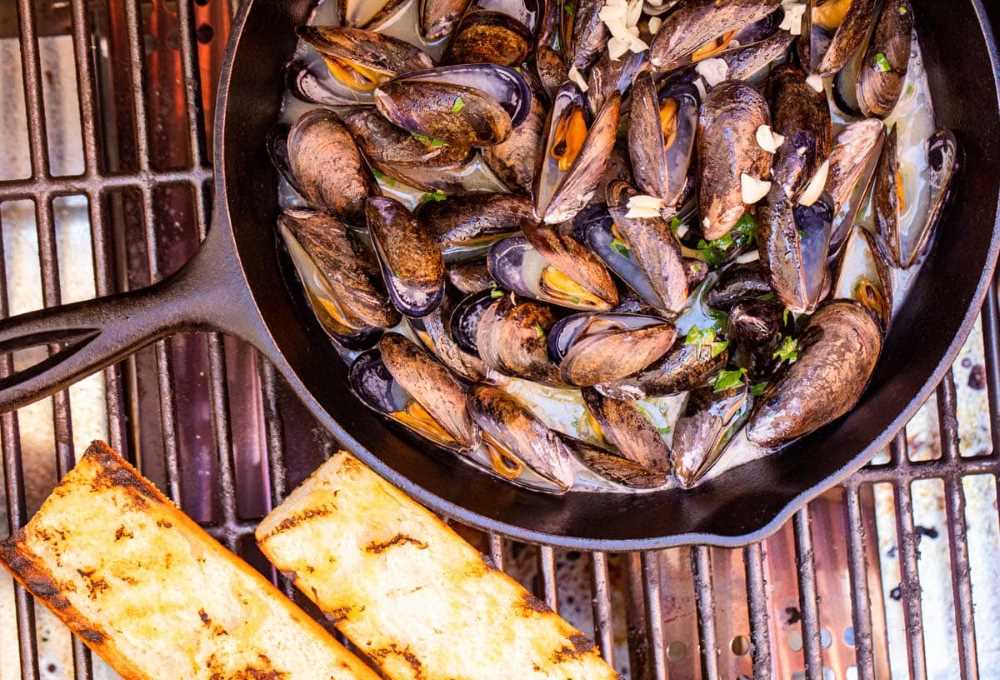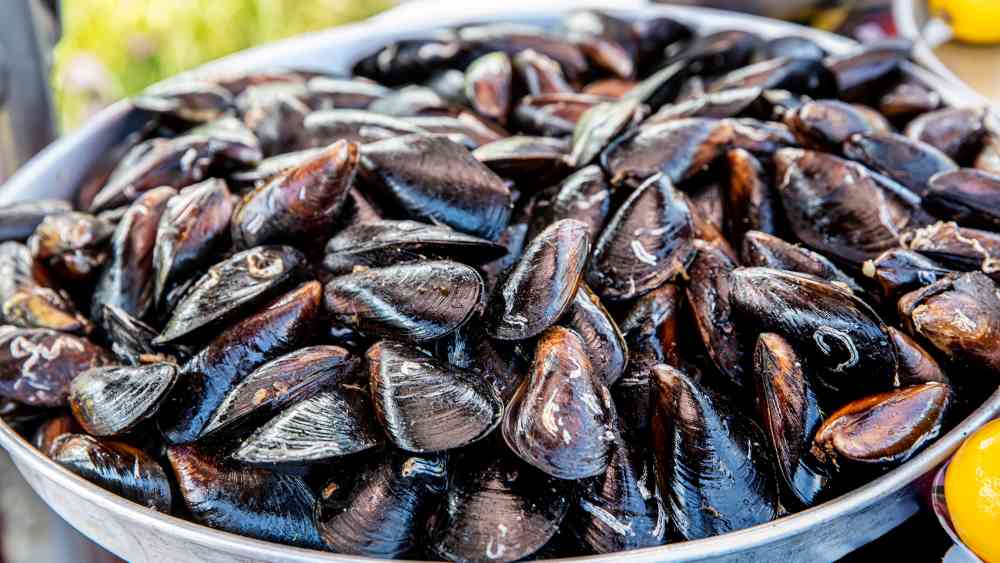How To Cook Mussels For Cats

As pet owners, we are always looking to provide optimal nutrition to their pet cats which often leads us to explore unconventional yet highly nutritious options. Today, let’s dive into the world of cat food with a focus on a seafood delight: how to cook mussels for cats.
Mussels, often underestimated in feline diets, are rich in Omega-3 fatty acids, promoting a glossy coat and supporting joint health. Besides it being a joy of treat for your cat, this article will guide you through the process of selecting, preparing, and cooking mussels to ensure a safe and nutritious dining experience for your pet.
Can Cats Eat Mussels?
Absolutely! Cats can safely enjoy mussels as part of their diet. Mussels offer a tasty and nutritious treat for our feline friends. Rich in Omega-3 fatty acids, these shellfish can contribute to a healthy coat and support joint function in cats.
Before serving mussels to your cat, it’s essential to ensure they are thoroughly cooked and free from any harmful additives. Therefore, introduce them gradually into your cat’s diet to monitor for any adverse reactions. While mussels are generally safe, individual cats may have preferences or sensitivities, so it’s wise to consult with your veterinarian before making significant changes to your cat’s menu.
With the right preparation and attention, sharing mussels can be a delightful and wholesome addition to your cat’s culinary experiences, offering a tasty break from their regular meals.
Nutritional Benefits of Cooking Mussels for Cats

To cook mussels for cats means giving them a number of nutritional benefits, making it a fantastic addition to their diet:
1. Omega-3 Fatty Acids: Mussels are a powerhouse of Omega-3 fatty acids, essential for your cat’s overall health. These fatty acids play a vital role in maintaining a glossy coat and supporting joint function, ensuring your feline friend stays agile and active.
2. Protein Powerhouse: Rich in high-quality protein, mussels contribute to muscle development and repair. Protein is a fundamental building block for your cat’s body, promoting strength and vitality.
3. Vitamins and Minerals: Mussels contain a variety of vitamins and minerals, including vitamin B12, selenium, and zinc. These nutrients are crucial for various bodily functions, from maintaining a healthy immune system to supporting optimal metabolic processes.
4. Low in Fat: Mussels are a low-fat option, making them a healthy choice for cats, especially those prone to weight issues. This helps in maintaining an ideal body condition and overall well-being.
Incorporating cooked mussels into your cat’s diet ensures they receive a well-rounded and nutritious meal, contributing to their overall happiness and vitality.
Selecting the Right Mussels
Here are some factors to keep in mind when selecting the right mussels to cook for your cat.
- Freshness Matters: Opt for fresh mussels from reputable sources, ensuring they are free from additives or preservatives harmful to your cat.
- Check Shell Condition: Choose mussels with closed shells, as open shells may indicate that the mussel is no longer alive and could pose a health risk.
- Mind the Size: Consider the size of the mussels, making sure they are appropriate for your cat’s dietary needs.
- Be Allergy Aware: Be mindful of potential allergens. If your cat has specific sensitivities, consult with your veterinarian to explore suitable alternatives.
- Consult with the Vet: When in doubt, consult with your veterinarian to ensure the mussels you select align with your cat’s health requirements. Taking the time to carefully choose mussels sets the stage for a tasty and healthful treat for your feline companion.
How to Cook Mussels For Cats

Once you are done with all the pre-requisites, you can begin to cook mussels for cats by following these steps:
Preparation Steps
Before you start to cook mussels for cats, here are some preparation to make:
- Cleaning and Debearding:
- Begin by cleaning the mussels thoroughly under cold running water.
- Remove the beard, a fibrous strand protruding from the shell, as it can be tough and indigestible for cats.
- Discard any mussels with cracked or open shells.
- Shelling and Portioning:
- Carefully remove the shells, ensuring no shell fragments remain.
- Portion the mussels into bite-sized pieces suitable for your cat’s size and dietary needs.
- Quality Check:
- Conduct a final quality check to ensure the mussels are fresh, free from contaminants, and safe for feline consumption.
- Conduct a final quality check to ensure the mussels are fresh, free from contaminants, and safe for feline consumption.
Cooking Techniques
While some pet owners may prefer other techniques when it comes to cooking mussels for cats, we believe this is the most optimal method:
- Steam Cooking Method:
- Place the shelled and portioned mussels in a steamer basket over boiling water.
- Steam for approximately 5-7 minutes until the mussels are fully cooked but still tender.
- Avoid overcooking to preserve the nutritional value.
- Avoid Harmful Ingredients:
- Exclude ingredients like garlic and onions, as they can be toxic to cats.
- Stick to a simple steam preparation to maintain the integrity of the mussels.
- Cat-Friendly Herbs:
- Consider adding cat-friendly herbs like catnip as a garnish for added flavor and potential health benefits.
- Ensure the herbs used are safe for feline consumption and don’t overpower the natural taste of the mussels.
- Gradual Introduction:
- Gradually introduce the cooked mussels into your cat’s diet to monitor their response and prevent digestive upset.
- Consult with your veterinarian before making significant dietary changes.
By following these preparation steps to cook mussels for cats, you can create a delicious and safe treat for your cat, providing them with a nutritious and enjoyable dining experience.
Potential Concerns and Considerations
Here are some potential concerns to look out for when feeding mussels to cats:
- Be mindful of potential allergies or sensitivities your cat may have to mussels. Monitor for any signs of adverse reactions, such as itching, vomiting, or lethargy.
- Pay attention to any changes in your cat’s behavior after introducing mussels. Behavioral shifts could indicate discomfort or unease with the new addition to their diet.
- Before making significant changes to your cat’s diet, seek advice from your veterinarian. They can provide tailored recommendations based on your cat’s individual health needs.
- Watch for signs of digestive upset, such as diarrhea or vomiting, especially when introducing mussels for the first time. Consider a gradual introduction to minimize the risk.
- If your cat shows signs of dislike or sensitivity to mussels, explore alternative protein sources that align with their taste preferences and dietary requirements.
- Regularly monitor your cat’s health and well-being, even after they become accustomed to mussels. This ensures ongoing suitability and identifies any potential issues promptly.
Conclusion
To sum it up, if you are not sure whether to cook mussels for cats, then consider it a great idea! These little shellfish are packed with good things like Omega-3s and protein, which make your cat’s fur shiny and keep their joints happy. We’ve covered the basics – picking the right mussels, preparing and cooking them safely, and even adding some cat-friendly herbs for extra flavor.
Just keep an eye out for any changes in your cat’s behavior or tummy issues when you introduce mussels. If everything looks good, your cat gets to enjoy a tasty and healthy treat. Remember, consulting with your vet is always a smart move when you’re making changes to your cat’s diet. So, happy cooking and here’s to keeping your cat’s mealtimes both delicious and nutritious!


